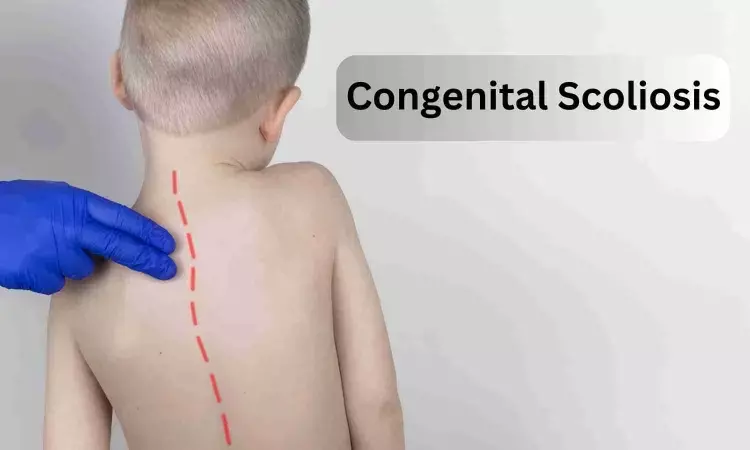- Home
- Medical news & Guidelines
- Anesthesiology
- Cardiology and CTVS
- Critical Care
- Dentistry
- Dermatology
- Diabetes and Endocrinology
- ENT
- Gastroenterology
- Medicine
- Nephrology
- Neurology
- Obstretics-Gynaecology
- Oncology
- Ophthalmology
- Orthopaedics
- Pediatrics-Neonatology
- Psychiatry
- Pulmonology
- Radiology
- Surgery
- Urology
- Laboratory Medicine
- Diet
- Nursing
- Paramedical
- Physiotherapy
- Health news
- Fact Check
- Bone Health Fact Check
- Brain Health Fact Check
- Cancer Related Fact Check
- Child Care Fact Check
- Dental and oral health fact check
- Diabetes and metabolic health fact check
- Diet and Nutrition Fact Check
- Eye and ENT Care Fact Check
- Fitness fact check
- Gut health fact check
- Heart health fact check
- Kidney health fact check
- Medical education fact check
- Men's health fact check
- Respiratory fact check
- Skin and hair care fact check
- Vaccine and Immunization fact check
- Women's health fact check
- AYUSH
- State News
- Andaman and Nicobar Islands
- Andhra Pradesh
- Arunachal Pradesh
- Assam
- Bihar
- Chandigarh
- Chattisgarh
- Dadra and Nagar Haveli
- Daman and Diu
- Delhi
- Goa
- Gujarat
- Haryana
- Himachal Pradesh
- Jammu & Kashmir
- Jharkhand
- Karnataka
- Kerala
- Ladakh
- Lakshadweep
- Madhya Pradesh
- Maharashtra
- Manipur
- Meghalaya
- Mizoram
- Nagaland
- Odisha
- Puducherry
- Punjab
- Rajasthan
- Sikkim
- Tamil Nadu
- Telangana
- Tripura
- Uttar Pradesh
- Uttrakhand
- West Bengal
- Medical Education
- Industry
Curve Size Predicts Success of Limited Fusion for Congenital Scoliosis, suggests study

In children with congenital scoliosis, the goal of limited fusion is to correct spinal anomalies at a young age-in a single surgery. But is it really a “one and done” procedure?
Not necessarily, says a new study led by Michael Heffernan, MD, at Children’s Hospital Los Angeles. The team found that children with large preoperative curves-greater than 50 degrees-were 21 times more likely to need further spinal surgeries after a limited fusion than those who had smaller curves.
Dr. Heffernan, a pediatric orthopedic surgeon in the Jackie and Gene Autry Orthopedic Center at CHLA, presented the results in November at the 17th International Congress on Early Onset Scoliosis and the Growing Spine. The study will also be presented at the Pediatric Orthopaedic Society of North America annual meeting in May as part of the “Best of Spine” section.
“What these results mean is that if we’re going to use a short-segment strategy and limit the fusion levels, then we need to do so before the curve gets to 50 degrees,” he explains. “We need to intervene earlier.”
Key findings
The retrospective study looked at 36 patients who underwent limited fusion for congenital scoliosis at CHLA. Mean follow-up time was 7.6 years after the initial surgery.
The team found that:
• When preoperative curves were over 50 degrees, 88% of children ended up needing more corrective surgeries later on.
• When curves were less than 50 degrees, only 25% of children needed another operation. Although that is a high reoperation rate compared with adolescent idiopathic scoliosis, treatment of congenital scoliosis is far more complex.
• Overall, 53% of patients needed additional spinal surgery, at a mean time of 5.2 years after the limited fusion.
The researchers also looked at such factors as age, number of levels fused, location of spinal anomalies and medical comorbidities. But only curve magnitude and percentage of curve correction predicted the need for more surgeries.
What it means for surgeons
Although the data showed a clear benefit to performing limited fusion when curves are still small, that approach can come with challenges, Dr. Heffernan notes.
One problem? The screws and implants used for limited fusions are too large for very young children. That’s why orthopedic surgeons generally wait until a child is 3 to 5 years old before performing this operation.
But while waiting, the spinal curve can worsen-making it unlikely that a limited fusion can permanently fix the problem.
So what should surgeons do for a 2-year-old patient with a 35-degree curve? Although it wasn’t part of the study, one possible solution is to use casting or bracing as a way to slow the curve’s progression.
“Historically casting hasn’t been used much in children with congenital scoliosis because it doesn’t fix the underlying issue, which is that the vertebra did not form properly in utero,” Dr. Heffernan says. “But we can use casting as a delay tactic. The idea is to keep the curve small while you’re waiting for the child to grow big enough for surgery.”
He adds that because congenital scoliosis is such a heterogenous and complex condition, care needs to be individualized to each patient. That said, the study results are already changing his own approach to these patients.
“I’m much more likely now to intervene earlier in the process as opposed to watching and waiting,” Dr. Heffernan notes. “That may mean casting or it may mean doing the surgery at a younger age. But we cannot let the curve get out of control if we plan on doing a limited fusion. That is the clear take-home from this study.”
Dr Kamal Kant Kohli-MBBS, DTCD- a chest specialist with more than 30 years of practice and a flair for writing clinical articles, Dr Kamal Kant Kohli joined Medical Dialogues as a Chief Editor of Medical News. Besides writing articles, as an editor, he proofreads and verifies all the medical content published on Medical Dialogues including those coming from journals, studies,medical conferences,guidelines etc. Email: drkohli@medicaldialogues.in. Contact no. 011-43720751


